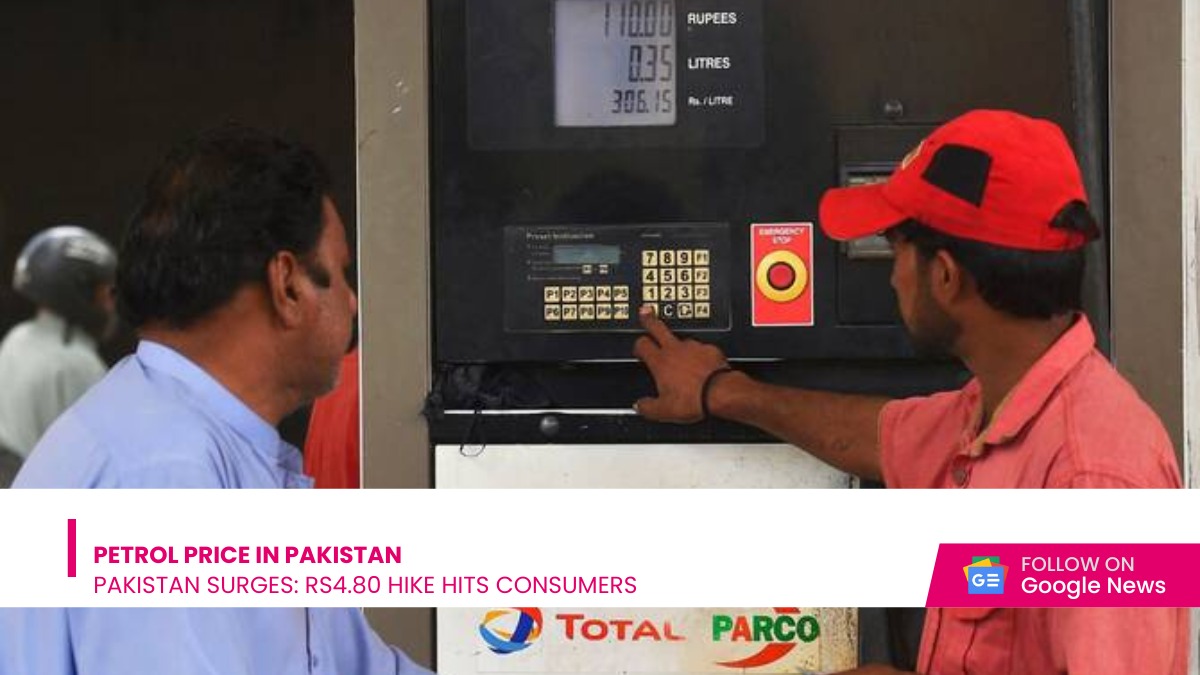On June 16, 2025, Pakistan’s federal government raised petrol prices by Rs4.80 per litre and high-speed diesel (HSD) by Rs7.95 per litre, impacting millions of commuters and businesses nationwide. The Finance Division announced the hike late Sunday night, citing rising global oil prices and recommendations from the Oil and Gas Regulatory Authority (OGRA). Effective immediately, petrol now costs Rs258.43 per litre, and HSD is priced at Rs262.59 per litre. This increase, amid a fuel crisis in Balochistan, has sparked concerns about rising inflation and transportation costs.
Details of the Price Hike
The Finance Division’s notification detailed the new rates: petrol rose from Rs253.63 to Rs258.43 per litre, and HSD increased from Rs254.64 to Rs262.59 per litre. The ex-refinery price of petrol climbed by Rs1.12 per litre, with the Inland Freight Equalization Margin (IFEM) rising by Rs3.68 to Rs8.23 per litre. For HSD, the ex-refinery price surged by Rs5.91 per litre, while the petroleum levy and sales tax remained unchanged.
Why the Increase?
The price adjustment reflects global oil market trends, with the OPEC basket price rising from $63.18 to $69.15 per barrel between June 30 and June 12, 2025. Pakistan, heavily reliant on imported oil, adjusts fuel prices fortnightly based on international rates and exchange rate fluctuations. OGRA, responsible for regulating fuel prices, recommended the hike to align domestic prices with global increases. Additionally, an upcoming Rs2.5 per litre carbon levy on petrol and diesel from July 1, 2025, signals further cost pressures.
Impact on Consumers and Economy
The petrol price in Pakistan hike will likely drive up transportation and commodity costs, straining household budgets. HSD, vital for trucks, buses, and agricultural machinery, directly affects logistics and food prices. Social media posts on X reflect public frustration, with users like @FaaruSays likening the hike to “missiles” hitting citizens. Businesses, particularly in manufacturing and transport, face higher operational costs, potentially fueling inflation.
Balochistan Fuel Crisis Adds Pressure
Compounding the price hike, Balochistan faces a severe fuel shortage due to disrupted Iranian oil supplies amid the Israel-Iran conflict. About 60-70% of petrol pumps in border districts like Turbat, Gwadar, and Chagai have closed, pushing black-market petrol prices to Rs280-300 per litre. Road blockades between Quetta and Karachi further disrupt fuel supply. Despite Balochistan’s government denying a widespread shortage, spokesperson Shahid Rind cited 28 fuel-related accidents in Quetta as justification for closing illegal pumps.
Fuel Price Trends in Pakistan (2025)
| Date | Petrol (Rs/Litre) | HSD (Rs/Litre) | Change (Petrol/HSD) |
| Jan 16 | 256.13 | 260.95 | +3.47 / +2.61 |
| Feb 1 | 257.13 | 267.95 | +1.00 / +7.00 |
| Mar 1 | 256.13 | 263.95 | -1.00 / -4.00 |
| May 16 | 252.63 | 254.64 | Unchanged / -2.00 |
| June 1 | 253.63 | 254.64 | +1.00 / Unchanged |
| June 16 | 258.43 | 262.59 | +4.80 / +7.95 |
Pakistan Fuel Price Volatility
Pakistan’s dependence on imported oil has long caused fuel price instability. In September 2023, petrol hit a record Rs331.38 per litre, prompting widespread protests. The adoption of Euro V standards in 2020 improved fuel quality but increased costs. The government’s tax policies, including a Rs76 per litre petroleum levy, add to consumer burdens. Unlike neighboring countries like India, Pakistan lacks a consistent fuel subsidy framework, making price hikes more impactful.
Expert Perspectives
Finance Minister Muhammad Aurangzeb stated, “Aligning fuel prices with global markets is necessary under our IMF commitments.” However, economist Dr. Kaiser Bengali warned, “Diesel price hikes hit agriculture and transport hardest, driving inflation.” OGRA’s fortnightly price reviews, factoring in global oil prices and exchange rates, aim to stabilize the market, but public discontent grows, as seen in X posts labeling the hike an “inflation bomb.”
PSO and Fuel Quality
Pakistan State Oil (PSO), the nation’s leading fuel supplier, offers products like Premier Euro 5 and Hi-Cetane Diesel Euro 5, meeting modern emission standards. Hi-Octane prices, unregulated by OGRA, vary across pumps, often exceeding Rs300 per litre. PSO’s lubricants, featuring technologies like Opticore, enhance engine performance, but rising fuel costs overshadow these innovations for most consumers.
Looking Ahead
With global oil prices volatile and a carbon levy looming, further petrol price in Pakistan increases are likely. Addressing Balochistan’s fuel crisis requires restoring supply chains and regulating illegal trade. The government faces pressure to balance IMF commitments with public relief. Share your thoughts on how this price hike affects you in the comments, and follow for updates on Pakistan’s fuel market.
The petrol price in Pakistan surged by Rs4.80 to Rs258.43 per litre and diesel by Rs7.95 to Rs262.59 per litre on June 16, 2025, amid global oil price rises and a Balochistan fuel crisis.
FAQs: Petrol Price in Pakistan
What is the petrol price in Pakistan today?
As of June 16, 2025, the petrol price in Pakistan is Rs258.43 per litre, following a Rs4.80 hike announced by the Finance Division.
What is the price of PSO oil in Pakistan?
PSO offers fuels like Premier Euro 5 petrol at Rs258.43 per litre and Hi-Cetane Diesel Euro 5 at Rs262.59 per litre as of June 16, 2025. Hi-Octane prices vary, often exceeding Rs300 per litre.
Which fuel is best in Pakistan?
For cars and bikes, Premier Euro 5 petrol (Rs258.43/litre) with a high octane rating is ideal for performance. For heavy vehicles, Hi-Cetane Diesel Euro 5 (Rs262.59/litre) suits high-RPM needs. CNG (Rs190-194/kg) is a cost-effective, eco-friendly alternative.
How much is 1 liter of petrol?
One litre of petrol in Pakistan costs Rs258.43 as of June 16, 2025, after a Rs4.80 increase driven by global oil price trends.
What factors affect petrol prices in Pakistan?
Petrol prices are influenced by global crude oil prices, exchange rates, taxes (e.g., Rs76/litre petroleum levy), transportation costs, and supply disruptions, with OGRA revising rates fortnightly.




Join The Discussion